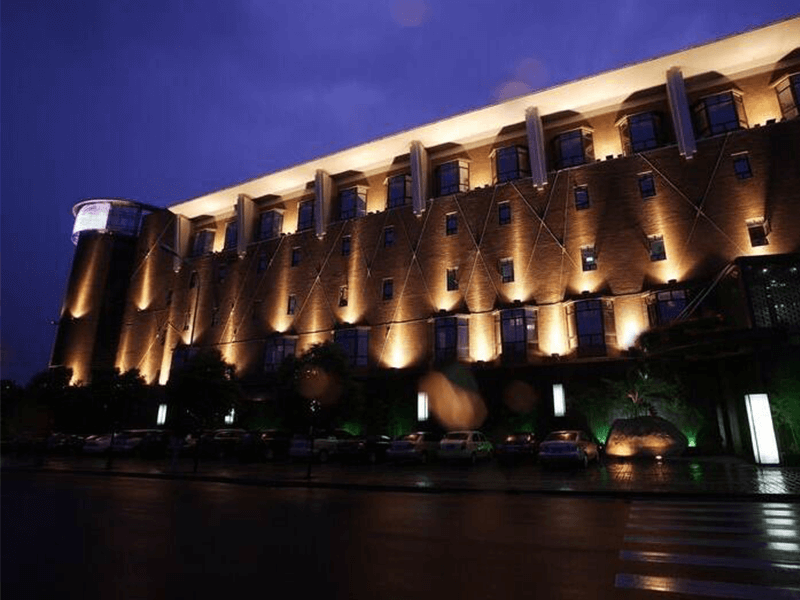The application of water fountain lights is a testament to the convergence of artistic creativity, architectural prowess, and technological innovation. These lights transcend mere illumination; they orchestrate a symphony of visual marvels that transform water features into captivating focal points, enhancing aesthetic allure and functional ambiance in many settings. Understanding the diverse applications of water fountain lights is paramount for professionals and enthusiasts seeking to harness the full potential of outdoor lighting design.
1. Public Spaces and Landmarks:
With their enchanting presence, water fountain lights grace public plazas, urban parks, and iconic landmarks. They create awe-inspiring spectacles that draw visitors, offering serene escapes amidst bustling cityscapes and transforming ordinary spaces into extraordinary experiences.
2. Architectural Marvels:
Water features paired with fountain lights in architectural design add sophistication and elegance. They accentuate the architectural nuances, enhancing facades, courtyards, and entrances with mesmerizing visual effects.
3. Gardens and Landscapes:
Water fountain lights create magical focal points in gardens and landscapes. They adorn ponds, pools, and waterfalls, infusing natural environments with an ethereal quality. These lights extend the enjoyment of outdoor spaces into the evening hours, captivating visitors with their serene radiance.
4. Commercial Plazas and Malls:
Commercial spaces benefit from the allure of water fountain lights. The interplay of light and water transforms commercial plazas and shopping malls into inviting and engaging areas, fostering a sense of community and enhancing the shopping experience.
5. Hospitality and Resorts:
In hospitality, water fountain lights craft unforgettable experiences for guests. From tranquil pools that evoke serenity to grand fountain displays that host events, these lights contribute to a sense of luxury and relaxation.
6. Entertainment Venues:
Water fountain lights are seamlessly integrated into entertainment venues, including amusement parks and concert arenas. Synchronized with music, they create captivating water and light shows that add a layer of enchantment to the overall experience.
7. Educational Institutions:
Even in educational settings, fountain lights add a touch of aesthetic charm. Campus fountains illuminated with gentle hues become serene gathering spots, fostering community and camaraderie.
8. Residential Retreats:
Private residences benefit from the serene charm of water fountain lights. They transform backyard water features into personal oases, providing tranquil spaces for relaxation and visual delight.
9. Cultural and Religious Spaces:
Water fountain lights enhance cultural and religious spaces, adding a contemplative element. They create peaceful and reverential atmospheres, strengthening the overall spiritual experience.
10. Museums and Cultural Institutions:
Water fountain lights can be integrated into museum courtyards and cultural institution spaces. They add an artistic element, creating serene areas for contemplation and reflection and enhancing the overall cultural experience.
11. Waterfront Developments:
Along waterfronts, fountain lights create captivating scenes that interact with the surrounding bodies of water. They transform waterfront promenades, boardwalks, and piers into dynamic, visually engaging spaces.
12. Special Events and Festivals:
Water fountain lights are often featured in special events and festivals. Their ability to produce dynamic color changes and captivating displays makes them an integral part of celebrations, adding a touch of magic to the festivities.
13. Corporate and Business Centers:
Corporate campuses and business centers incorporate water fountain lights to enhance their outdoor environments. These lights create visually appealing spaces that foster creativity, relaxation, and productivity.
14. Historic and Heritage Sites:
Historical sites, heritage buildings, and landmarks gain an enhanced aura through water fountain lights. They illuminate architectural details, evoke a sense of nostalgia, and breathe new life into heritage spaces.
15. Healing and Wellness Centers:
Water fountain lights create tranquil and rejuvenating environments in wellness facilities, such as spas and retreats. Combining soothing water sounds and gentle lighting fosters relaxation and stress relief.
16. Art Installations:
Water fountain lights serve as integral elements in artistic installations. They transform water features into living art pieces, allowing artists to merge water, light, and movement in captivating ways.
17. Transportation Hubs:
Fountain lights in transportation hubs like airports and train stations create welcoming and aesthetically pleasing environments. They offer a sense of calm amidst the hustle and bustle, enhancing the overall passenger experience.
18. Environmental Awareness:
Fountain lights can be used to raise awareness about environmental issues. They become symbols of eco-consciousness by employing energy-efficient LED lights and showcasing sustainable practices.
19. Urban Renewal Projects:
In urban renewal initiatives, water fountain lights contribute to revitalizing neglected spaces. They add vibrancy, attracting people to interact and enjoy the newly transformed areas.
20. Art and Music Festivals:
In art and music festivals, water fountain lights often take center stage. Their ability to synchronize with music and produce mesmerizing effects enhances the sensory experience for festivalgoers.
